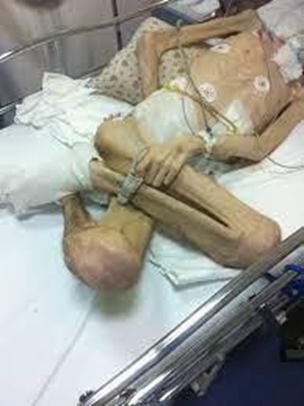A nurse is assessing a client who is experiencing complications due to immobility. Which of the following findings should the nurse expect? (Select All that Apply.)
Contractures
Diarrhea
Polyuria
Atelectasis
Pressure ulcers
Correct Answer : A,D,E
Choice A rationale: Contractures are a common complication of immobility due to the shortening of muscles and connective tissues.
Choice B rationale: Diarrhea is not typically associated with complications of immobility.
Choice C rationale: Polyuria is not typically associated with complications of immobility.
Choice D rationale: Atelectasis, the collapse of lung tissue, can occur in immobile clients due to reduced lung expansion and ventilation.
Choice E rationale: Pressure ulcers are a significant risk in immobile clients due to prolonged pressure on specific areas of the body.

Nursing Test Bank
Naxlex Comprehensive Predictor Exams
Related Questions
Correct Answer is A
Explanation
Choice A rationale: The client who is 92 years old, uses a walker, is incontinent, and has an extensive cardiac history is at higher risk for the development of pressure injuries due to age, immobility, and additional risk factors.
Choice B rationale: A client with paraplegia may be at risk for pressure injuries, but the combination of age, walker use, incontinence, and cardiac history increases the risk in Choice A.
Choice C rationale: A comatose client with a traumatic brain injury is at risk, but other factors in Choice A contribute to a higher overall risk.
Choice D rationale: A client who uses a cane and has dementia may be at risk, but the combination of age, walker use, incontinence, and cardiac history increases the risk in Choice A.
Correct Answer is B
Explanation
Choice A rationale: Extension is the movement of a body part away from the midline.
Choice B rationale: Adduction is the movement of a body part toward the midline.
Choice C rationale: Circumduction is the circular movement at the joint.
Choice D rationale: Abduction is the movement of a body part away from the midline.
Whether you are a student looking to ace your exams or a practicing nurse seeking to enhance your expertise , our nursing education contents will empower you with the confidence and competence to make a difference in the lives of patients and become a respected leader in the healthcare field.
Visit Naxlex, invest in your future and unlock endless possibilities with our unparalleled nursing education contents today
Report Wrong Answer on the Current Question
Do you disagree with the answer? If yes, what is your expected answer? Explain.
Kindly be descriptive with the issue you are facing.
